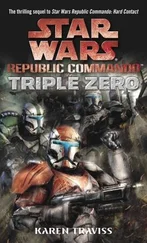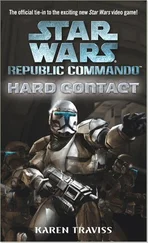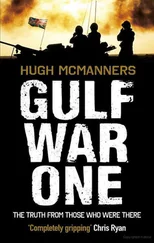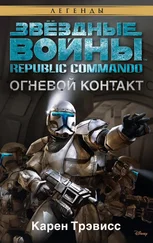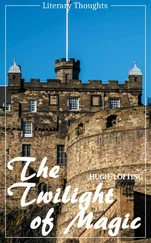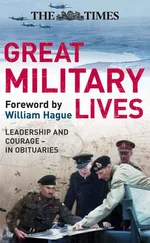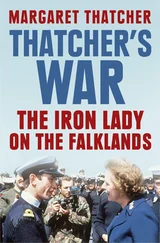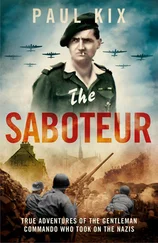Hugh McManners - Falklands Commando
Здесь есть возможность читать онлайн «Hugh McManners - Falklands Commando» весь текст электронной книги совершенно бесплатно (целиком полную версию без сокращений). В некоторых случаях можно слушать аудио, скачать через торрент в формате fb2 и присутствует краткое содержание. Город: London, Год выпуска: 2014, ISBN: 2014, Издательство: Nightstrike Publishing, Жанр: nonf_military, Биографии и Мемуары, на английском языке. Описание произведения, (предисловие) а так же отзывы посетителей доступны на портале библиотеки ЛибКат.
- Название:Falklands Commando
- Автор:
- Издательство:Nightstrike Publishing
- Жанр:
- Год:2014
- Город:London
- ISBN:978-0-992-81540-0
- Рейтинг книги:4 / 5. Голосов: 1
-
Избранное:Добавить в избранное
- Отзывы:
-
Ваша оценка:
- 80
- 1
- 2
- 3
- 4
- 5
Falklands Commando: краткое содержание, описание и аннотация
Предлагаем к чтению аннотацию, описание, краткое содержание или предисловие (зависит от того, что написал сам автор книги «Falklands Commando»). Если вы не нашли необходимую информацию о книге — напишите в комментариях, мы постараемся отыскать её.
Falklands Commando — читать онлайн бесплатно полную книгу (весь текст) целиком
Ниже представлен текст книги, разбитый по страницам. Система сохранения места последней прочитанной страницы, позволяет с удобством читать онлайн бесплатно книгу «Falklands Commando», без необходимости каждый раз заново искать на чём Вы остановились. Поставьте закладку, и сможете в любой момент перейти на страницу, на которой закончили чтение.
Интервал:
Закладка:
This small, sheep-rearing community is situated to either side of the bay itself, where it narrows into a small estuary. Several farmhouses are grouped around a jetty, where a rusty cargo vessel lay holed and aground in the mud. The houses are weatherboard with corrugated iron roofs, their small gardens enclosed by low wooden fences.
The settlement is surrounded by wet, green turf and low hills. There are no trees, and when the sun shines, the sea gleams blue, the flocks of gulls are brilliant white and the heather is bright green with tints of brown and purple.
Two decades later, I was to return again to Fox Bay with my fifteen-year-old son William. We fished, explored the beaches that hadn’t been mined, and he alarmed me by finding ammunition, lenses from gun sights, and missile casings.
When it’s not raining, Fox Bay is a very beautiful place, and completely peaceful – at least it was, until the Argies and then the Task Force arrived.
On 22 May, Major Jonathan Thomson, the Officer Commanding the Special Boat Squadron, got us all together in the main galley of HMS Intrepid . For more than an hour, with the clattering and shouting of the kitchen in the background, he talked through the tasks we were to undertake for the next phase of the operation.
Outside, the air over the ships in San Carlos Water was filled with the clatter of helicopters, Sea Kings and the trusty older Wessex, often with large nets suspended underneath carrying less fragile things like ration boxes, jerry cans or crates of ammunition, shuttling relentlessly from ship to shore unloading the incredible amount of stores the ‘Loggies’ had crammed into the ships. In the bowels of Intrepid the piles of equipment were melting away to reveal the extent of their foresight.
Behind the rows of vehicles, rations, barbed wire and ammunition, there appeared enormous lengths of piping and some enigmatic crates. Nobody knew what this was, until a group of Commando Engineers arrived asking for their water pumping kit, their enquiries greeted with blank faces, until somebody remembered this mysterious piping. The Engineers totally filled an LCM with this gear – a water-pumping pipeline with huge rubber torpedoes, to be filled with water from a ship then towed ashore to be plugged into the shore-based part of the system.
Landing craft chugged to and fro, while dotted across the green hillsides paratroopers and commandos deepened their trenches while sentries scanned the horizon, GPMGs at the ready. It was bitterly cold, wet and windy.
In the noisy warmth of Intrepid’s main galley, Jonathan Thomson told us that while the off-load and defensive preparations continued at San Carlos, Special Forces were to push inland, as close to Argentine positions around Port Stanley as possible, probing and testing their strengths and weaknesses.
The SBS were to investigate the northern coastline of East Falkland, especially the indented shore of San Salvador Water, into which, in due course, 3 Commando Brigade might move. In addition, we were to keep the Argentine garrison in West Falkland occupied to prevent them interfering with the San Carlos bridgehead area, until they could be dealt with properly. This latter task was to be my concern.
The scene in the galley was warm and cheerful. Once business was done people stayed on for a cup of tea, greetings being shouted across the room and much good-natured chaffing. We wore a peculiar mixture of green and brown assorted mountaineering clothing and normal camouflage military stuff. The long hair and beards fitted in with the general tone of the gathering, like a convention of friendly pirates.
“How are the Gunners then?”
“We’re all right judging from the state of you.”
“Dropped any short lately?”
The Royal Artillery’s’ uncomplimentary nickname ‘the Drop Shorts’ refers to shells that ‘drop short’ onto friendly troops. This happens, but rarely, and with mortars too, and is generally the result of battlefield confusion, infantry advancing too quickly and of mistaken identity.
Nick Allin was very quick to bite back on such occasions:
“Yeah, loads. Drop one on you if you like?”
“Don’t mess with that lot, for fuck’s sake. They’re actually quite useful… at times.”
The Special Boat Squadron guys were impressed with naval gunfire and keen to use more of it. This was to be the key to the bottling up of the West Falkland garrison.
The islands of West Falkland seemed to be occupied by an enemy brigade. A battalion plus were occupying Fox Bay, with artillery, anti-aircraft batteries, helicopters and a field hospital, and a similar force at Port Howard in the north, with other smaller garrisons in the more remote western islands. Both Fox Bay and Port Howard had airstrips, which were probably still in use and therefore capable of mounting helicopter-borne counterattacks on our anchorage at San Carlos.
The rhetoric from Buenos Aires stressed that should Stanley fall, the fight would continue in the west, with reinforcements being flown in from Argentina, and Fox Bay and Port Howard being strongly defended.
Even without reinforcement, if we tried to attack and capture either settlement, we’d need more than a brigade for each – which we did not have. They were both very good defensive positions and easy to defend, so our siege had to start as soon as possible.
The Royal Navy had the Falkland Sound pretty much sealed off, with only an occasional Argentine-crewed fishing boat creeping through at night. On one occasion, in daylight, the Navy detected a particular boat known to be making regular trips, so the SBS were tasked to capture it. This operation was mounted in a very short time, with the familiar rushing around and pandemonium.
Unfortunately, in the intervening period, Harriers returning to Hermes spotted the boat, and seeing military uniforms, attacked and severely damaged it. The SBS had been keen to capture this boat, for use as a base for small-boat operations, and thereafter spirited back to the UK. Instead the Harrier attack provided the SBS with a bloody first-aid exercise, patching up seriously injured Argentine military personnel, and the fishing boat sank.
Eventually the Navy sealed off all Argentine ship movement, and the blockade of West Falkland was made absolute.
The task of keeping the enemy in the west out of mischief was given to a single SBS Troop, consisting of three four-man reconnaissance teams and a headquarters – a big task for such a small number of men. This was because once all the Special Forces’ tasks had been identified and resources allocated, there was only the one Troop remaining to do this job.
So how could we achieve such an aim?
After much discussion, it was decided to plan a series of night raids, to insert FO1 close enough to the enemy positions so we could shell them with naval gunfire. Being as close in to the targets as possible meant that the effect of the fire can be assessed and adjusted as required, as well as to avoid damage to houses, and civilian casualties. Once the Argies had made the effort of repairing their installations, these raids would be repeated. The draining effect this would have on enemy morale in the west, we hoped, would sap any desire to interfere with our main operation in the east.
We wanted to hit both Port Howard and Fox Bay on subsequent nights, to achieve maximum impact and confusion. I therefore decided to split FO1 in two, both groups equipped with the necessary radios, plus an SBS recce team. Four is the absolute minimum number with which you can operate, because if one man is injured, two can carry him while the third goes ahead as scout.
For this phase of the operation, I was to have Steve Hoyland, Nick Allin and Des Nixon, with Tim Bedford having drawn the short straw, remaining behind as our anchorman to look after things on the ship.
Читать дальшеИнтервал:
Закладка:
Похожие книги на «Falklands Commando»
Представляем Вашему вниманию похожие книги на «Falklands Commando» списком для выбора. Мы отобрали схожую по названию и смыслу литературу в надежде предоставить читателям больше вариантов отыскать новые, интересные, ещё непрочитанные произведения.
Обсуждение, отзывы о книге «Falklands Commando» и просто собственные мнения читателей. Оставьте ваши комментарии, напишите, что Вы думаете о произведении, его смысле или главных героях. Укажите что конкретно понравилось, а что нет, и почему Вы так считаете.

